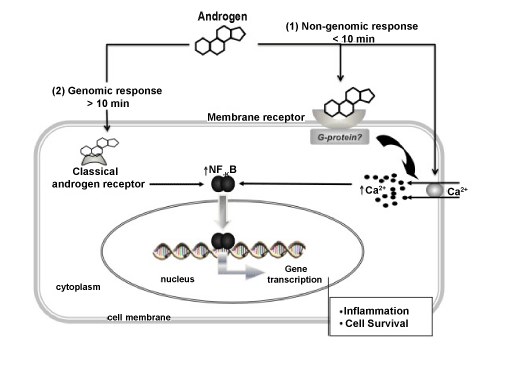
In this schematic of an endothelial cell, androgens elicit the rapid activation of NF-?B within minutes through membrane receptor signalling or through direct activation of Ca2+ channels via a non-genomic pathway. Subsequent initiation of the genomic pathway via the classical AR after a few hours then enhances NF-?B activation. Activation of NF-?B by androgens via the non-genomic pathway could result in the synergistic induction of gene expression and subsequent pathways involved in inflammation and/or cell survival. This model provides a useful means for separating desirable actions (e.g. vasodilation) from undesirable actions (e.g. up-regulation of inflammatory genes) and could be used as a potential end point for the development of androgen-based hormone treatment to selectively block the adverse effects of androgens.